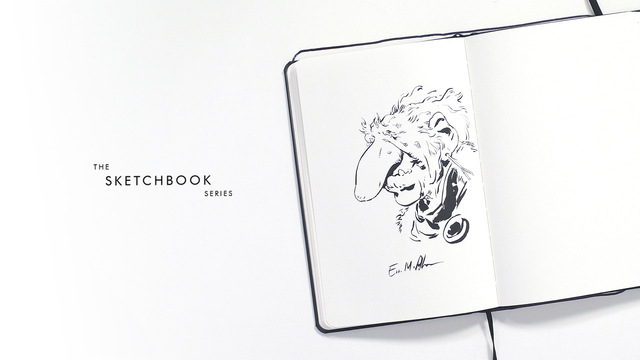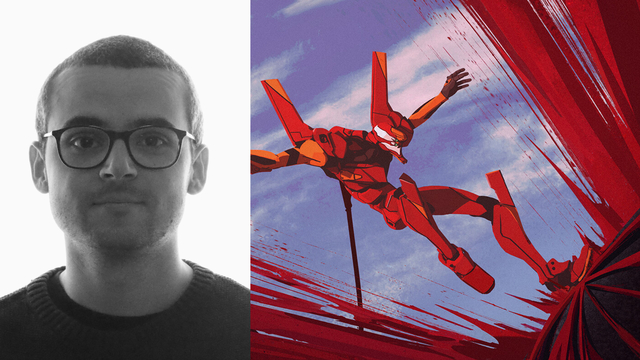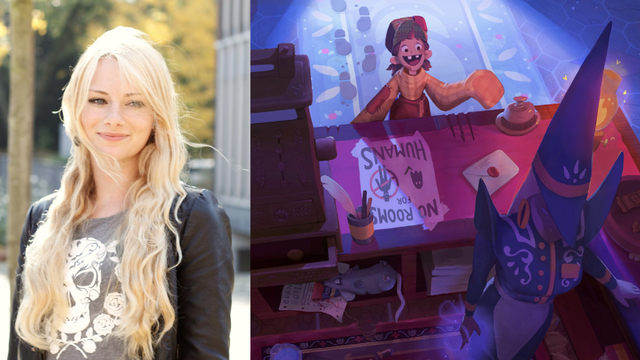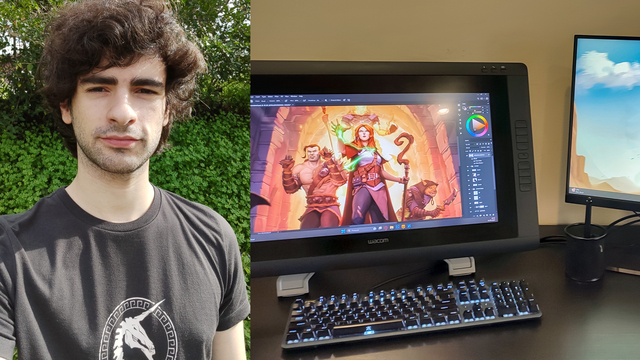When you want to sketch something or draw, the first thing you usually ask for is a piece of paper. But how many times have you found yourself sketching, drawing or doodling on a napkin, on the table itself or a mat, on an old bus ticket, on a wall, or on the sand? Sketching doesn’t have to be confined to a notebook and for many artists, it isn’t.
Carlos Grangel, for example, often draws on cereal boxes and other bits of cardboard. He likes to reuse materials. “It comes with the flow which is very important,” he explains. “You think and rethink too much before starting, that's not gonna be good. So you have to jump into the swimming pool and you have to play. The sooner you jump and you play, the sooner things are gonna happen.” So he will draw on whatever is at hand in the moment he is inspired. He even used a cereal box to sketch the corpse bride for Tim Burton.
Even if an artist can sketch and draw on many different types of surface, paper is definitely the most popular one. Calling it “paper”, however, simplifies the concept a little, since paper can vary in size, weight, surface, and color.
Just think of the absorbent Japanese paper made of mulberry bark, or linen paper which is best used for watercolors, or the rough surfaces suitable for pastel drawings that are so different from the smooth ones more appropriate for pen drawings.
Sketchbooks are made out of all these different types of materials and even their cover, binding and other factors impact their appearance and, therefore, also their price.
Illustrator Claire Wendling prefers using 2 dollar sketchbooks. “Generally I don’t like the expensive ones with paper that's too fancy. Because with cheap paper you don’t feel the pressure of ruining a very nice and pricy sketchbook,” she says. Claire uses her sketchbook to note down thoughts and ideas she can seek inspiration from in the future. “What I like with sketchbooks is that you can do tons of drawings in not a lot of time. It’s quite satisfying... like eating junk food,” she laughs.
Scott Eaton seems to agree with the idea of using more affordable and simple sketchbooks. “A lot of people don’t draw and don’t keep sketchbooks because they’re afraid of a quality metric that they have to achieve in there,” he says. “It's like when you give a very expensive sketchbook as a gift, with a leatherbound cover, maybe gold on the side of the pages... you never draw on it, because no drawing is ever good enough for it.” Scott believes that a sketchbook should be a place for ideas and brainstorming, not somewhere you make great drawings.
It’s up to an artist to choose which surface is best for them. One can draw on practically anything that has a somewhat plane surface. Sketching is definitely one of the easiest and most immediate ways in which you can let your creativity flow, but watching an episode of our Sketchbook series is also a great source of inspiration. Thanks to Lenovo, we have been releasing an episode a week for free on the THU YouTube channel. Make sure to explore the minds of some of the most talented artists in the world with us, every Friday.




